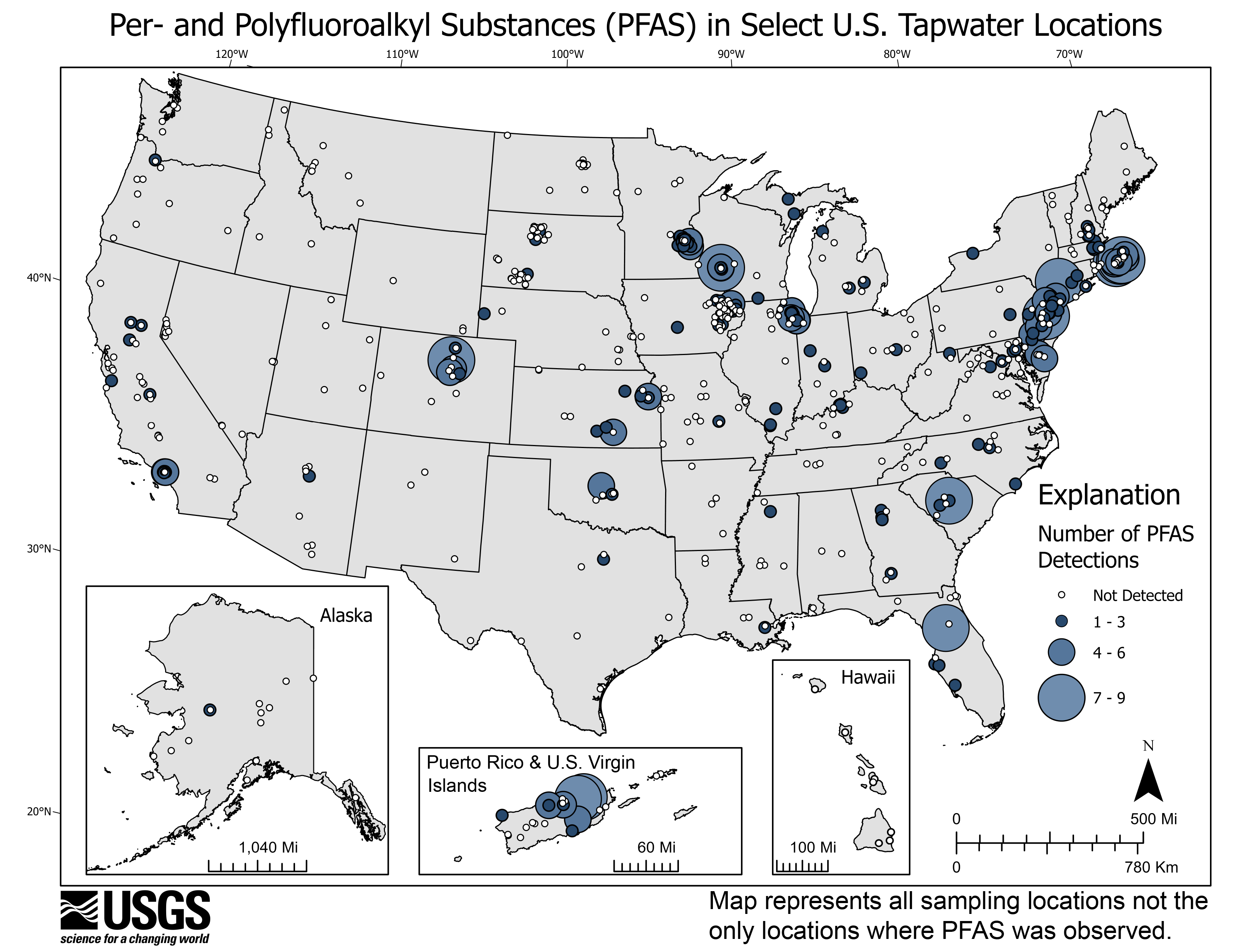A new U.S. Geological Survey study found at least 45% of the tap water in the United States is contaminated with one or more types of per- and polyfluorinated alkyl substances (PFAS). The study reports samples from more than 700 public and private water systems for 32 PFAS compounds.
The data is the result of the first nationwide study of PFAS in tap water from private and public water systems. USGS utilized the data to model and estimate PFAS contamination nationwide. The persistence of the chemicals in the environment and prevalence across the country make them a serious water quality concern.
Of the 32 individual PFAS compounds tested for through the study, the most frequently detected compounds were perfluorobutane sulfonic acid (PFBS), perfluorohexanesulfonic acid (PFHxS) and perfluorooctanoic acid (PFOA). Tap water samples were collected from 716 locations representing a range of low, medium, and high human-impacted areas. The low category included protected lands; medium included residential and rural areas with no known PFAS sources; and high included urban areas and locations with reported PFAS sources such as industry or waste sites.
Not surprisingly, most of the exposure was detected near urban areas and potential PFAS sources. The study’s results are in line with previous research concluding that people in urban areas have a higher likelihood of PFAS exposure. USGS scientists estimate the probability of PFAS being observed in tap water is about 25% in rural areas and around 75% in urban areas.
Learn more from the U.S Geological Survey Environmental Health Program’s PFAS Integrated Science Team’s website.

